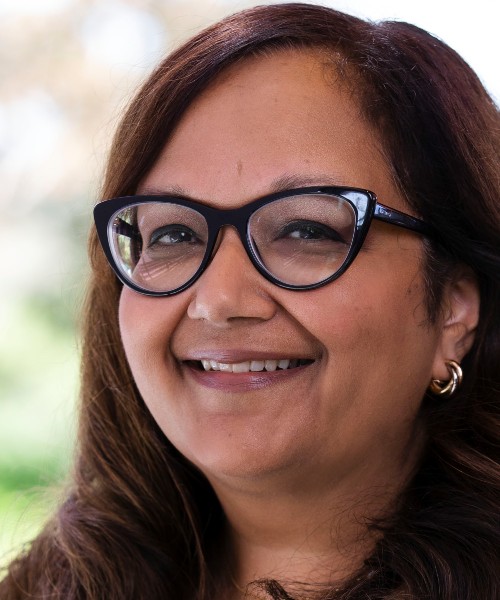Stanford Health Care's Alpa Vyas is part of a new wave of healthcare executives looking to forge more meaningful and lasting connections between patients and their care teams.
For Alpa Vyas, the concept of patient experience has changed significantly in healthcare. Once considered a luxury to the C-suite, it's now an important part of clinical care delivery and a key to measuring the value of the organization.
"It's really become about the whole journey that a patient experiences with a [care provider] or an organization," says the vice president and chief patient experience offices for Stanford Health Care. "How care is delivered … has fundamentally changed due to the pandemic."
Patient experience is an integral part of patient-centered care, an idea that's been gaining steam for at least two decades, as healthcare organizations look to shift from episodic to value-based care and make the patient the center of the equation rather than a peripheral. And it means a lot more than simply handing out a survey or asking patient to rate their healthcare experience.
"It's a connected experience now," says Vyas, who's been with Stanford Health Care since 2015 and previously worked with the Medical University of South Carolina (MUSC) and Deloitte Consulting. "And the care team has to understand the value and need [for that connection]."

Alpa Vyas, vice president and chief patient experience officer at Stanford Halth Care. Photo courtesy Stanford Health Care.
Stanford Health Care is one of many organizations to elevate the role of chief patient experience officer, part of a "patient experience journey" that Vyas says has been ongoing for several years. With health systems dependent on publicly reported data and benchmarks, Joint Commission reviews and HCAHPS (Hospital Consumer Assessment of Healthcare Providers and Systems) scores, leadership has to know how to connect with patients (both current and future), meet their needs, and address concerns before they become complaints.
Due in part to COVID-19 and the elevation of virtual care, the patient experience space is also seeing a good deal of innovation. Healthcare organizations are using a wide array of digital health technology, from online portals to self-scheduling platforms to telehealth and remote patient monitoring tools, that are designed to improve the patient experience.
"We've moved to the next generation [of] omni-channel communication," says Vyas. "Patients can now choose [how they want to connect with their care providers.] When that ability to choose is there, it's up to us to create differentiators."
That means, to use a phrase repeated quite often these days, connecting with patients when, where, and how they want to connect, be it through e-mails, text messages, phone calls, or snail mail. And it's not only about how to connect with them, but how often.
"We're about to connect with and collect data from a patient in new ways, but how do we actually bring this data together in a meaningful way … that personalizes the connection but isn't intrusive?" Vyas asks. "The information that the patient provides has to lead to a broader, more complete picture."
[See also: Health Systems Execs Discuss Human-Centered Design at Innovation Exchange].
Vyas says she and her team at Stanford Health Care conduct a lot of research, on topics that include human-centered design and empathy, to understand how the healthcare experience from the patient's point of view. They include family and other caregivers in the equation, with the understanding that patient care doesn't begin when the patient enters the hospital or end when he/she is discharged.
There is also an understanding that the benefits of new technology go both ways. While patients can enjoy the luxury of communicating with their care providers on a variety of channels, those providers also have new opportunities to reach their patients with important messages, information, and links to resources, and they can use that technology to measure how those messages are received and acted upon.
"The value is only demonstrated when we can actually do something with it," says Vyas. That might mean an uptick in cancer screenings brought about by an e-mail or text message campaign, or an improvement in patient discharge times caused by a digital platform that smooths out the rough edges of scheduling and provider check-offs, or maybe a single message to a grumpy teenager that leads him or her to improve their diabetes care management routines.
That's the gist of the connected experience, she says: The use of clinical, operational, and interventional data so that the patient experience is completely intertwined with the experience of the care team and physicians.
As the healthcare industry continues its journey toward value-based care, chief patient experience officers like Vyas will be crucial in establishing and maintaining that connection with the patient. And hospitals and health systems will rely on that expertise as they face stiff competition from telehealth companies, health plans and retail giants like Amazon for those healthcare dollars.
"There's still a lot of healthy skepticism about measuring the patient experience," she says. "Over time, we want to use that to design better connections not only for the patient, but also the provider."
“Patients can now choose [how they want to connect with their care providers.] When that ability to choose is there, it's up to us to create differentiators.”
— Alpa Vyas, vice president and chief patient experience officer, Stanford Health Care.
Eric Wicklund is the associate content manager and senior editor for Innovation at HealthLeaders.
KEY TAKEAWAYS
The role of chief patient experience officer has increased in visibility and importance over the past two decades as healthcare organizations shift to value-based care.
Executives in this position are responsible for improving patient engagement and finding new ways to connect with patients and exchange valuable information.
In many cases they're using digital health and telehealth technology to create new connections, pass along important information, and gather data about the patient outside the hospital setting.
